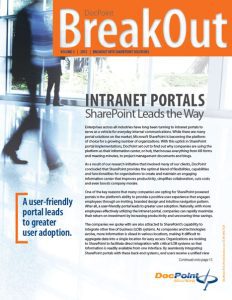We often hear stories about how in-house SharePoint migrations fail, especially as more organizations are making the jump to SharePoint 2013. As an integrator, DocPoint has seen its fair share of these attempts, as well as heard numerous migration misconceptions.
Frequently, companies think that they can just detach and re-attach the database and be done. Very rarely is this the case—always take into consideration the time and resources your team will need before you attempt this task. Do you have a detailed governance plan in place? What about the proper architecture and IT requirements? These are vital pieces needed for carrying out a successful migration.
Another remark we hear is, “Once we move the database we’re good to go, right?” Sure, SharePoint may be up and running, but that doesn’t necessarily lead to instantaneous user acceptance. SharePoint 2013 has a different look and feel than previous versions, so we recommend implementing some training. Remember: if users don’t accept the solution, your migration has failed.
If you’re looking to migrate to 2013 (or any other version of SharePoint), consider researching the migration tools that are available in the market today. Most likely (almost always) they will save you time and money when moving from 2007 – 2010 – 2013.
Ready to get started? Always make sure to first perform your business analysis. Identifying what will be moved and what will and won’t work will save you from headaches down the road. Use the day-to-day system users when performing the BA work up front. They are often your biggest allies in migration and system design efforts. Keep in mind that an integrator like DocPoint can provide guidance in these areas and beyond to help ensure that your migration is a smooth one.

